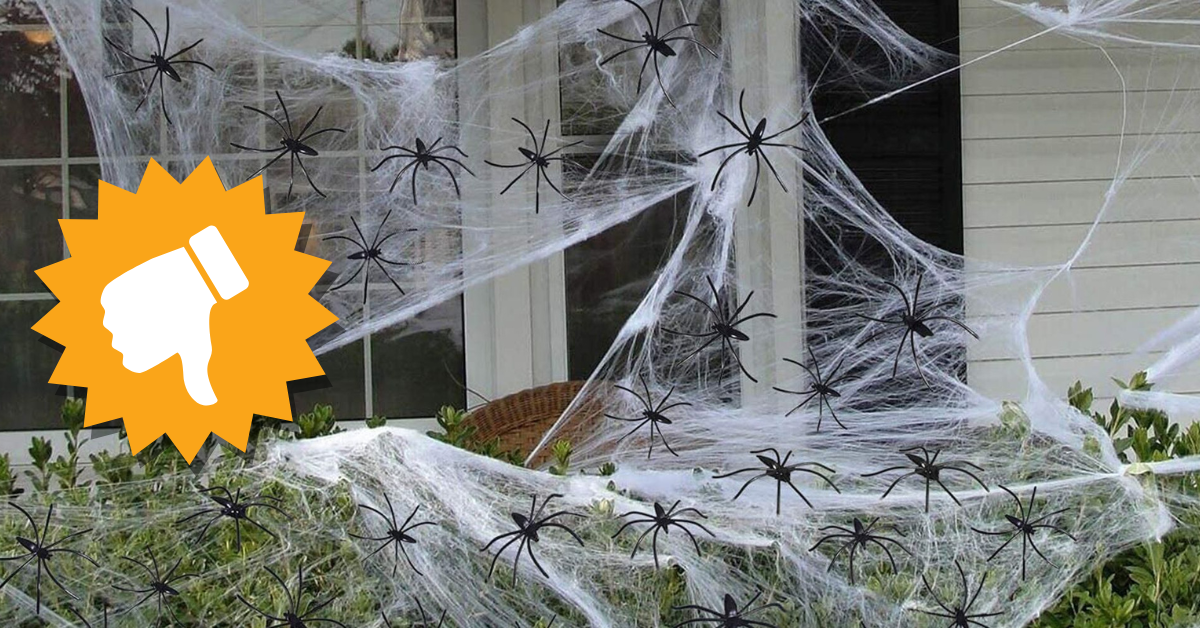Believe me when I say that I love Halloween just as much as the next person. Probably a bit more, even. As I drove in to work recently, I was struck by the elaborate, creative arrangements that have been put up in anticipation of All Hallows’ Eve.
I also pondered how our actions surrounding Halloween impact other living beings around us (we ought to do this all the time, anyway).
At Friends of Animals, we understand that some Halloween decorations (and activities) can be harmful, if not fatal, to wildlife and pets. If you want to avoid inadvertently harming animals while enjoying the spooky season, read on for some helpful tips.
Avoid webs and other unintentional traps
Those inexpensive synthetic ‘spiderweb’ decorations are any flying animal’s worst nightmare. Bats, birds and bugs are ALL at risk of getting trapped within these unforgiving webs. This problem spans across the world, too—studies show animals getting trapped in these decorations from Idaho and California to Australia.
Animal experts also advise not using decorations with small edible looking parts or any with loops or closed circles. Small animals can get stuck in them. Foraging animals may also mistake the small pieces for food, which poses a great choking risk. String lights, which also include light up spiderwebs, can ensnare male deer because their antlers can get tangled in them.
Watching out for wildlife
We should always be cautious of wildlife and loose pets while driving. It’s a shame that most accidents that involve killing wildlife on the roads are preventable. On Halloween, we should be extra watchful for crepuscular or nocturnal wildlife who have been startled out of their hiding places due to trick or treaters. Speaking of trick or treating, we should avoid cutting across lawns or venturing into any brush or woods – this can disturb the wildlife residing there.
Dangers to pets
Pet caregivers should be aware of all the ingredients in Halloween candy (and toys) that are toxic to pets: chocolate, chocolate covered raisins, artificial sweeteners like xylitol, glowsticks, candy corn, macadamia nuts, and of course, alcohol top the list. Consider storing it in a locked or high cabinet that even the most athletic of pets won’t be able to access. And clean up all wrappers and packaging, which pose a choking hazard (for wildlife too).
While pet costumes can be adorable, choose a comfortable costume that fits properly, doesn’t restrict movement and doesn’t hinder your pet’s ability to breathe. Take off the costume if your pet displays any signs of stress or discomfort, which can include pacing, hiding, or refusing to move. Never leave your pet alone when they’re dressed in their costume.
Finally, we should be diligent in making sure opening the door for trick or treaters doesn’t lead to a domestic animal escaping. A startled pet may dart outside. So keep your pets in a secure, quiet room. You can add some creature comforts to their secured space such as their bed, water, food and a favorite toy.
We’d love to see photos of your pets in their costumes before the big day so drop a photo in the comments section.
Gabe Ahmed recently joined Friends of Animals as director of development. A passionate vegan, he already feels right at home here. He lives in Newtown with three adopted cats (Peach, Bunny, and Pirate) and an adopted yorkie, Max.

